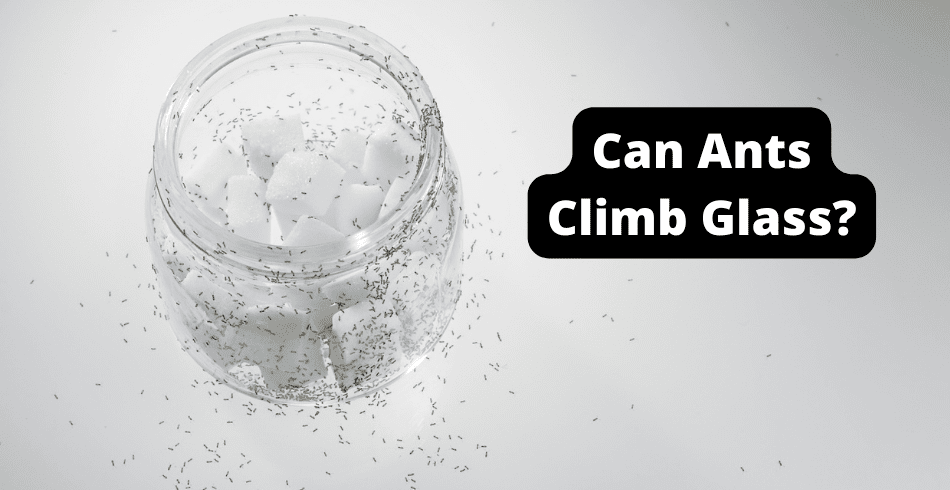Ants are incredible creatures. While we know they can climb just about any surface, smooth or not, there are a few surfaces that many aren’t sure if ants can climb on. Can ants climb glass?
Ants can climb glass. This is because of the ant’s claws and arolium. The claws and arolium of an ant allow it to latch onto many different smooth surfaces and move freely without worrying about falling. Ants evolved to become arboreal, enabling them to move up and down surfaces.
You can read more about this in this research paper.
Due to biological advances (like sticky hairs on their feet), ants climb plastic just as easily as they can climb glass.
Though, there are a few surfaces that ants cannot climb
We will tell you all about them below.
How Do Ants Climb?
When ants are climbing, their feet touch the substrate with their adhesive pads and an array of fine hairs tightly aligned on the ant’s tarsal segments. Ants can climb most surfaces by utilizing the ant’s unique body structure and different angles.
To answer some questions right away, ants can climb walls, glass, staircases, metal, stainless steel, ceilings, rough surfaces, and fishing line.
But have you ever wondered how they could walk upside-down?
Why does it seem like ants and other insects can climb walls and move along ceilings seemingly unaffected by gravity?
All of this is due to the suction cups and hairs on their feet.
What’s unique about ants is that they will use different angles for gripping depending on the structure.
For example, when Weaver ants were climbing vertically on some glass, depending on if their feet were above or below the Centre of Mass (with respect to gravity) changed if the ants utilized their arolia (toes) or if they utilized their heels during surface contact. (Source)

What can ants not walk on?
Store bout Fluon or PTFE brushed onto glass is impossible for ants to walk on. Ants can barely walk on glass coated with a mixture of baby powder and rubbing alcohol and works as a quick solution when the others are not around.
This is a secret that those with ant farms have used for years.
Fluon plus PTFE can be purchased here from Amazon.
While many believe that polished glass, Teflon-coated surfaces, and anything covered in slick liquids can stop ants, we highly disagree.
Don’t trust these rumors. Ants can and will climb all of these above.
Can Ants Climb Upside Down?
Ants can very easily walk upside down, and this is due to their very low weight and their tiny, hooked claws and hairs at the tips of their feet. Ants have three major climbing aids, adhesive pads, claws, and feet with hairs.
Ants can walk vertically and horizontally on most surfaces without falling.
You’re probably wondering how ants can effortlessly scale walls and other surfaces.
Ants truly defy gravity in this manner.
But it’s not magic.
It’s just physics.

Ants have arolia, little pads that allow them to climb almost any surface.
The “pretarsal adhesive pad” on ants’ feet is the fundamental mechanism for obtaining traction on walls and ceilings.
These pads are pretty sticky.
The moist, sticky material within the pad seeps out and fills up all the small spaces of air between the ant’s foot and the wall when it puts pressure on it.
The result is that the ant not only holds the wall but also clings to it.
The actual process that is taking place is known as “Capillary Adhesion.”
But when climbing over hard surfaces, ants utilize their claws instead.
Next are the claws.
Ants and Their Claws
On rough surfaces, ants may hold the shell with unique claws on the rear of each foot.
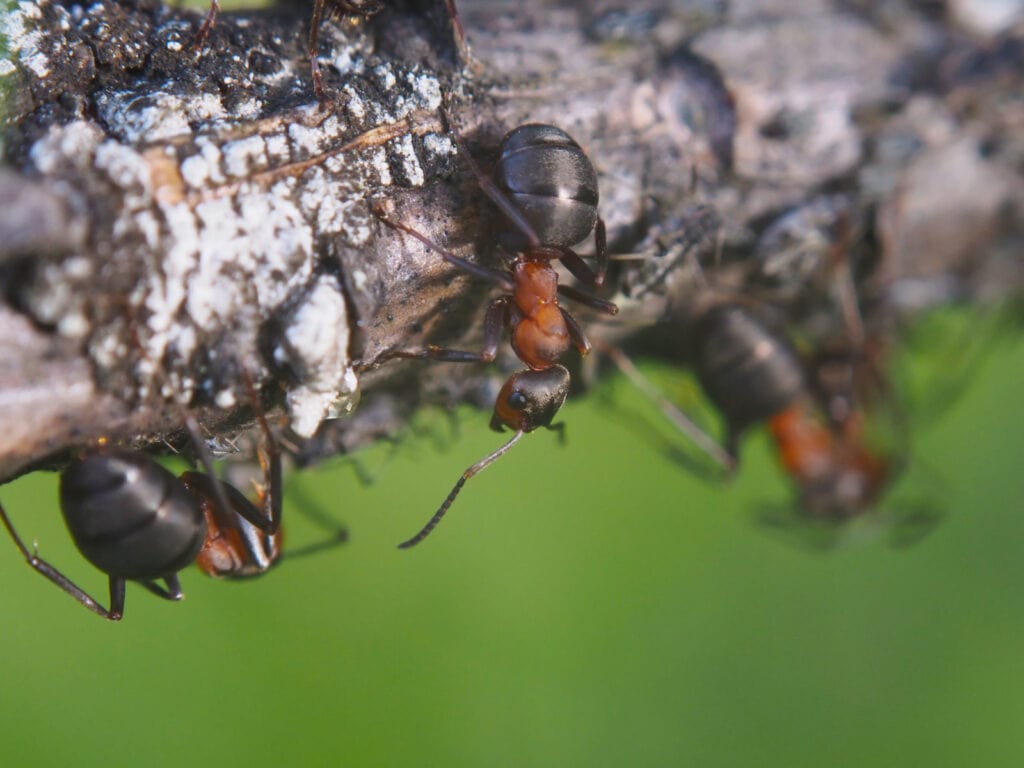
The claws of ants are enormous for their size.
As a result, they have an excellent grip on surfaces.
They lean heavily onto these claws, mostly sitting back on (from their front foot), keeping most of their weight over their claws.
This is good because it keeps them from falling off whatever they hold onto.
When climbing, ants look for tiny gaps in the substrate to latch onto.
There are many locations for ants to latch onto during their climbs if you look at your walls and ceilings via a microscope.
Due to their incredible strength, ants can exert enough power from their body into their claws to prevent them from falling off that specific surface.
It reminds me of an ice climber with a large pick.
As he climbs up the mountain, he’ll pound the pick into the ice mountain as he climbs.

Ants and the hair on their feet
Ants are covered with hair on their body, just like many other arthropods.
These hairs, called setae in technical terms, are directly linked to the nervous system and fulfill many sensory functions.
They allow ants to communicate with one another, navigate, sense sound, and adjust to the temperature outside.
Ants cling to surfaces with the hairs on their feet, but the adhesive pads do the bulk of the job.
The hairs primarily focus on angles and support for their arolia.
As the ant climbs, it will often utilize the claws to cling on, then hairs as a backup to keep them in place, somewhat like a hand-break.
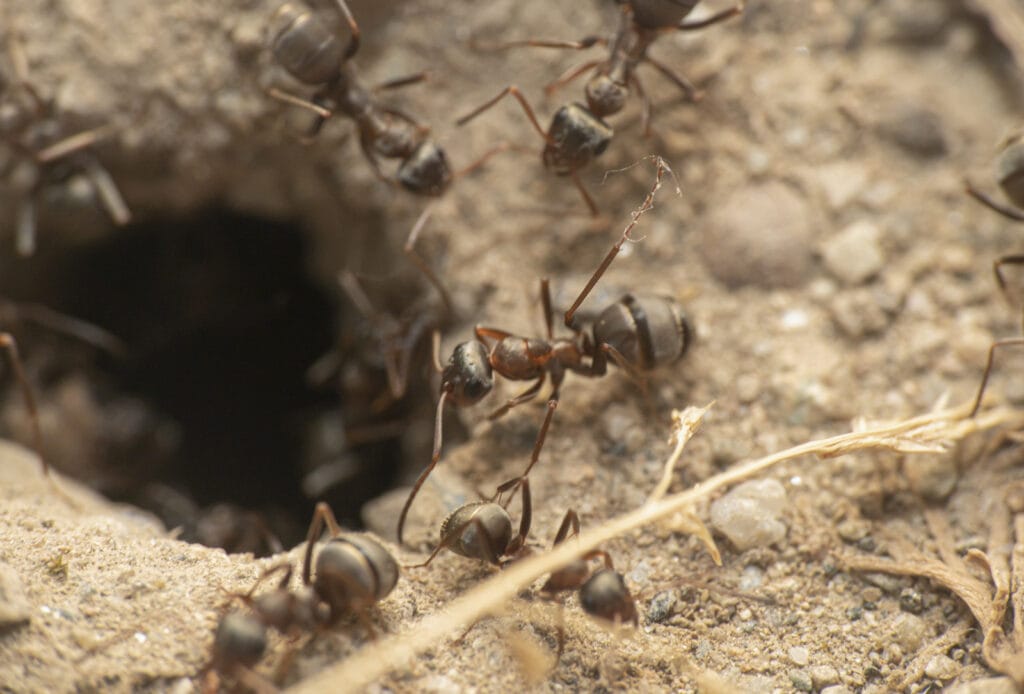
During studies by Thomas Endlein and Walter Federle, on a rougher surface, like sandpaper, the pressure exerted by the ants was actually in the pushing motion.
This means that instead of a pulling motion found in the claws, the hairs pressed in the opposite direction of the claws on rougher surfaces, creating a very high-pressure lock.
This is reversed on smooth surfaces, where the hairs act in a pulling motion working with the claws.
Their research found that the tarsal hair produces high amounts of friction and pushes outwards during horizontal and vertical climbing and walking.
Read more about that study here.
Using these three methods listed above, they can hang from just about any surface, including the ceiling.
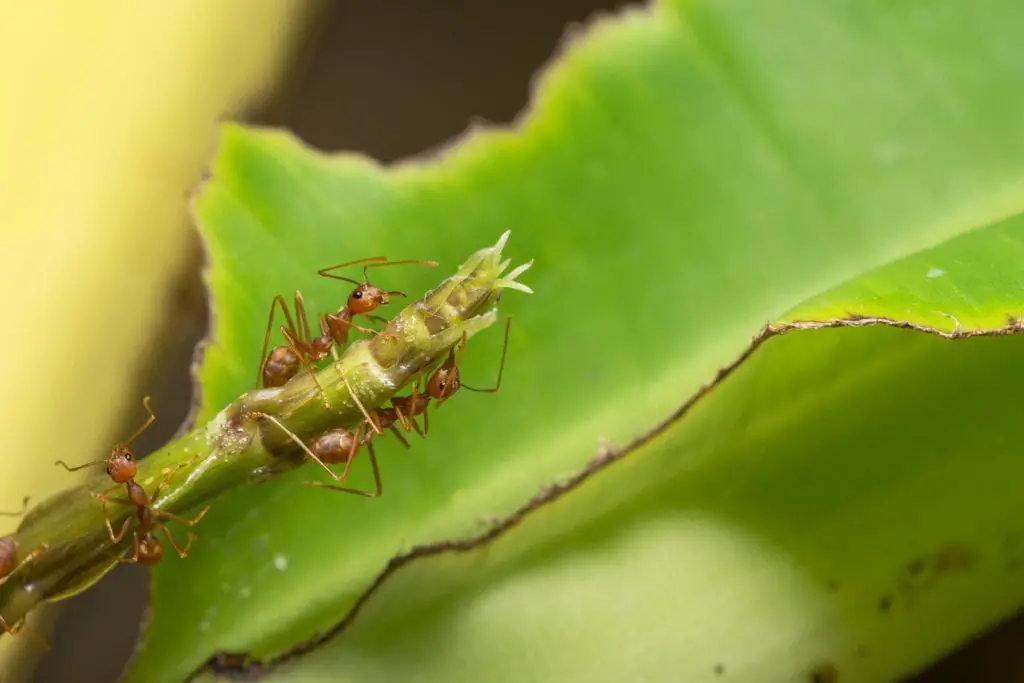
What Can Ants Climb?
Ants can climb up on the surface if it hasn’t been treated with anything that can cause extreme slippage.
Ants’ climbing abilities have evolved over thousands of years already.
Climbing is a necessary survival ability because they rely on it to get food and water sources that would be essential for their colony’s survival.
So, where can ants climb, and how?
Ants can climb most surfaces, which is important as ants need these talents to help them in their daily activities.
Being able to climb all these different surfaces listed below allows them to obtain food and avoid predators.
Another advantage of their climbing is that they are risk-free from falling.
Due to the biological advances listed above, ants have little chance of falling.
Can Ants Climb Walls?
A wall is a structural structure separating a space (room) into two rooms while providing protection and shelter.
In general, the walls are divided into two types: exterior and interior walls.

But climbing such walls is not an easy task for ants.
It requires a lot of effort to pull off.
Ants use their claws and arolia to grab on tight to these walls and not let go.
As we all know, walls are rarely perfectly smooth, and those imperfections give ants something they can grip, which will be helpful for their climbing.
We saw above that these ridges create a scenario for the tiny hairs on the ants to push away from the wall.
Why do ants climb walls?
If you observe ants climbing up your walls or any wall, it is probably because they are looking for food.
In some cases, they may have constructed a nest in your walls and are trying to get back in.
This is particularly dangerous for carpenter ants in the winter.
If you see any carpenter ants around this time, inspect the areas of your home that are centrally heated.
This includes walls near the fireplace, water heaters, and the stove.
This is a carpenter ants’ favorite place to hide and build nests.
If this happens, they will cause havoc on the wood structure of your home.
Can Ants Climb Ceilings?
The truth is, ants have no problem crawling across your roof or ceiling.
It is much easier for ants to climb walls and ceilings than to scale smooth glass.
Ants are easily and freely able to walk through your ceiling.
This is again because of their claws and suction cup pads on their feet that latch tightly onto the ceiling.
One other biological advantage is the ant’s unique center of gravity. With long legs and very low weight, gravity doesn’t have the same effect on ants that it does on us.
While many ask, It does not matter if you have a triangular or straight ceiling.

If you see ants on your ceiling, we highly doubt it’s because you left food up there.
A simpler answer is that the ants have built a nest in your attic or roof that has gone undiscovered.
If this is the case, try and follow one of the ants back to their nest.
You could also try setting up something like an ant bait to stop the cause at the source.
Are Ants Affected By Gravity?
Why doesn’t gravity affect ants the same way that it affects us?
Because of a molecular force!
If we put our feet against a wall, especially one made of glass, there would always be tiny gaps between us and the surface, preventing us from sticking to it.
However, ants have a secret to getting by this.
When they put their small feet up against a wall, the tiny hairs on their feet adhere to the ridges and gaps in the smooth surface.
With unique angles, the ants can latch onto these surfaces with enough grip to support their whole body weight.
Although the stickiness is weak, this, combined with their powerful claws clinging to the glass wall, holds the ants onto these surfaces.
Can ants climb a tree?
Ants can climb a tree; some ants even thrive living in the canopy. For example, the Azteca ant dominates the Amazonian rainforest. In a study in 2018, nearly half of the trees randomly sampled in the rainforest found these ants.
The Azteca ant is not one you want to see around (and probably won’t) as these ants are highly aggressive and will clear ecosystems very quickly.
Some ants you probably will see around are carpenter ants.
These ants love wood surfaces and spend most of their time latched onto a slippery surface with suction pads.
Remember, these ants build their nests in abandoned wood.
Sometimes called wood ants, carpenter ants, while not super dangerous, can wreak havoc quickly on houses if not taken care of.
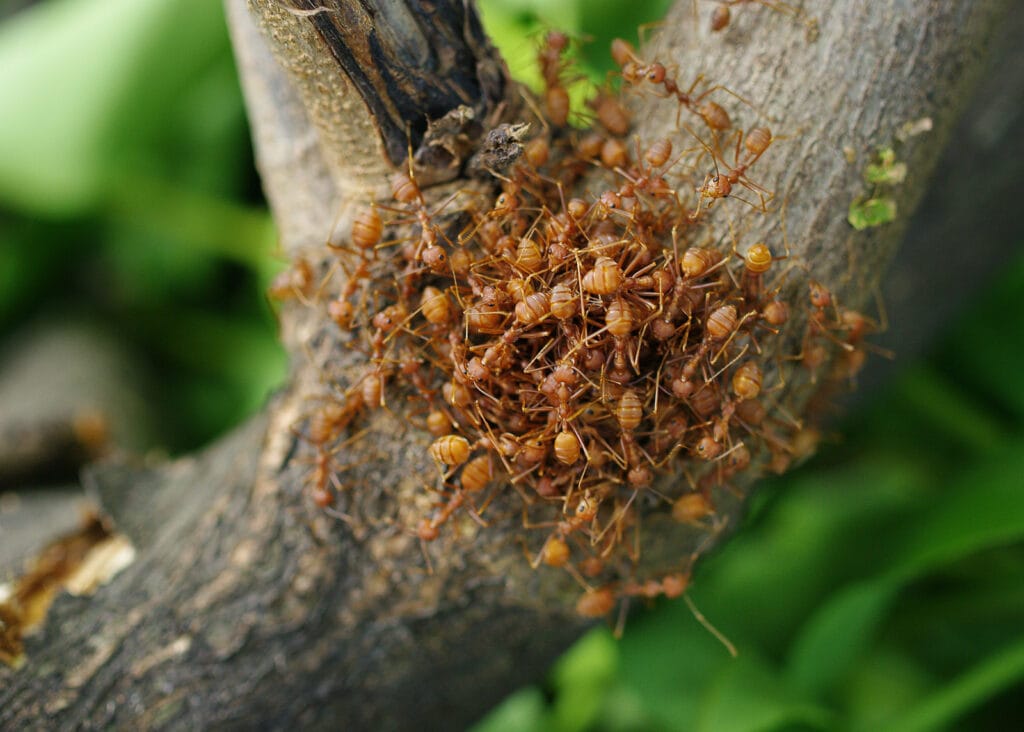
Can ants climb any wet or dry surface?
When the ants are attached to a surface with their tiny hairs and claws, it does not matter if the surface is wet or dry.
Although small, ants are incredibly amazing creatures.
Ants can walk vertically and even upside down on any surface.
Other Articles Answering Some Common Ant Questions
When it comes to ants, there are so many questions.
We go into detail, answering some of these common questions on our website.
Here are some of those posts:
